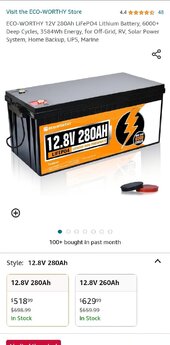It started with looking at buying a portable power station as an all in one system that is missing only the solar panels.
From there I learned that some systems don't offer solar charging while battery is discharging.
And from there I learned while some systems do that, other portable power stations won't let you skip the battery while solar is still going strong to save you on some battery cycles.
So if there isn't a perfect portable power station with those features, what exactly could I buy to build my own version of what I want? or does it not exist?
Note I'm looking to start small so I already have two 450 Watt Solar Panels.
A build like this
is tempting but I need a Hybrid Inverter/Controller than can handle just two panels in series roughly 80 VOC.
From there I learned that some systems don't offer solar charging while battery is discharging.
And from there I learned while some systems do that, other portable power stations won't let you skip the battery while solar is still going strong to save you on some battery cycles.
So if there isn't a perfect portable power station with those features, what exactly could I buy to build my own version of what I want? or does it not exist?
Note I'm looking to start small so I already have two 450 Watt Solar Panels.
A build like this




